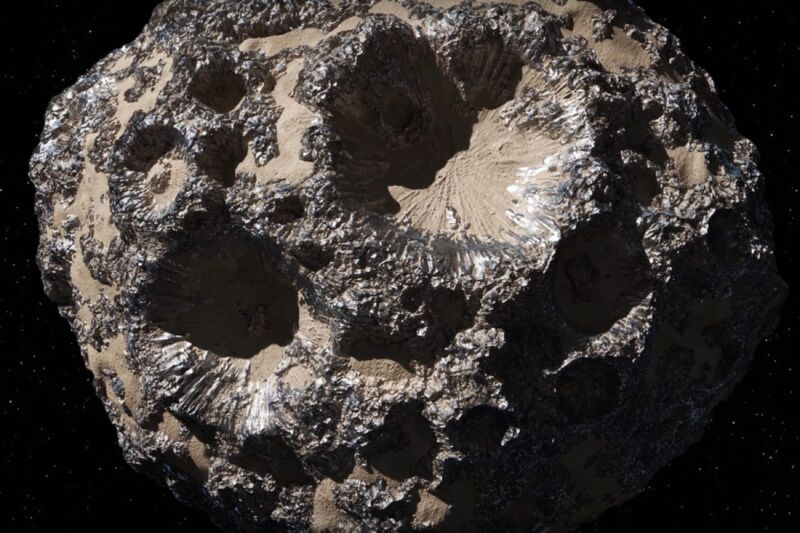Astronomers reveal the most detailed map of the asteroid Psyche yet

NASA
Astronomers have produced the most detailed map to date of the surface of 16-Psyche, an asteroid that scientists believe could hold clues to how planets formed in our Solar System. According to a paper published in the Journal of Geophysical Research, 16-Psyche has a highly varied surface of metal, sand, and rock that suggests its history could include metallic eruptions, as well as being hit by other celestial objects. The asteroid is the focus of NASA’s Psyche mission, launching later this year.
As we’ve reported previously, 16 Psyche is an M-type asteroid (meaning it has high metallic content) orbiting the Sun in the main asteroid belt, with an unusual potato-like shape. The longstanding preferred hypothesis is that Psyche is the exposed metallic core of a protoplanet (planetesimal) from our Solar System’s earliest days, with the crust and mantle stripped away by a collision (or multiple collisions) with other objects. In recent years, scientists concluded that the mass and density estimates aren’t consistent with an entirely metallic remnant core. Rather, it’s more likely a complex mix of metals and silicates.
Alternatively, the asteroid might once have been a parent body for a particular class of stony-iron meteorites, one that broke up and re-accreted into a mix of metal and silicate. Or perhaps it’s an object like 1 Ceres, a dwarf planet in the asteroid belt between the orbits of Mars and Jupiter—except 16 Psyche may have experienced a period of iron volcanism while cooling, leaving highly enriched metals in those volcanic centers.
Scientists have long suspected that metallic cores lurk deep within terrestrial planets like Earth. But those cores are buried too far beneath rocky mantles and crusts for researchers to find out. As the only metallic core-like body discovered, Psyche provides the perfect opportunity to shed light on how the rocky planets in our Solar System (Earth, Mercury, Venus, and Mars) may have formed. NASA approved the Psyche mission in 2017, intending to send a spacecraft to orbit the asteroid and collect crucial data about its characteristics.
On the left, the map shows surface properties on Psyche, from sandy areas (purple/low) to rocky areas (yellow/high). The map on the right shows metal abundances on Psyche, from low (purple) to high (yellow).
Prior mapping efforts relied on measuring infrared light bouncing off the asteroid’s surface with various telescopes around the world. Last year, astronomers produced a surface map of Psyche with much higher resolution, based on 2019 observational data collected by all 66 radio antennas of the Atacama Large Millimeter/submillimeter Array (ALMA) in Chile.
By combining all those signals into a single synthetic signal, the team achieved the equivalent resolution of…
Read More: Astronomers reveal the most detailed map of the asteroid Psyche yet
